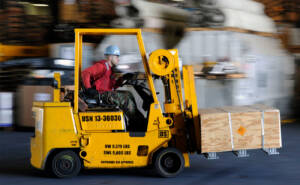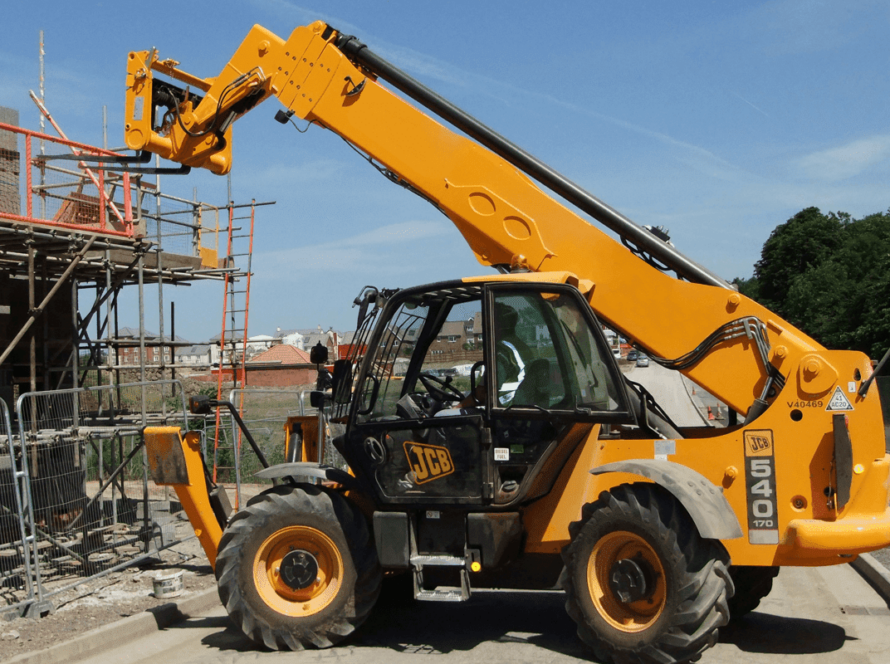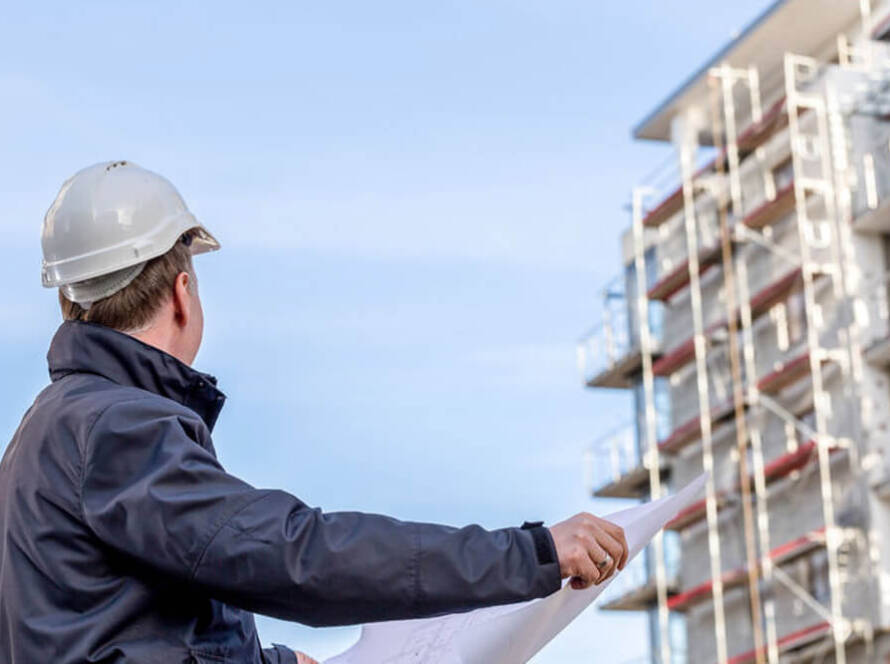The telehandler is a highly versatile piece of equipment, also known as a telescopic handler. It is a telescopic forklift that can lift loads and extend or retract its telescopic arms to adjust its maximum reach and lift height. Telehandlers are also called a lull, teleporter, reach forklift, or zoom boom, and they are widely used in the agriculture and construction industry.
The main use for a telehandler is to lift pallets, with the ability to suspend loads with a chain or shift heavy loads to areas that otherwise would be difficult to reach. You can train to become a telehandler operator by taking an accredited CPCS course or an NPORS course, which will give you the skills you need, and the certification to prove you have them.
Ready to become a certified telehandler operator? Book your course TODAY!
How Does a Telehandler Work?
The telehandler has a range of capabilities, making it suitable for various work environments, such as:
- Construction
- Agriculture
- Waste and recycling.
It features a telescopic boom that can accommodate different attachments for lifting, suspending loads, and performing various material-handling tasks.
Thanks to its adaptability, the telehandler is well-suited for diverse worksites, environments, and terrains. By swapping attachments, it can function as a forklift, crane, or other lifting equipment. The quick hitch design allows operators to change attachments efficiently, minimizing downtime and effort.
This versatility makes the telehandler an invaluable asset, streamlining tasks that would otherwise require multiple machines.
What is a telehandler used for?
Telehandlers are widely used across various industries, particularly in construction and agriculture.
While they can operate both indoors and outdoors, their large size makes them better suited for outdoor environments unless working in a spacious indoor area.
Primary Uses
The main function of a telehandler is to lift and transport heavy loads. For short-distance movements, it can often complete tasks by extending and retracting its telescopic boom without repositioning its base.
With the ability to accommodate different lifting attachments, a telehandler can handle a wide range of materials, including:
- Steel beams
- Concrete blocks
- Bricks
- Timber
- Pallets
- Earth
- Waste
Versatility & Terrain Adaptability
One of the key advantages of a telehandler is its adaptability. By switching attachments, it can perform multiple functions, from lifting pallets to acting as a crane.
Additionally, telehandlers are designed for stability on rough or uneven terrain, making them ideal for construction sites and outdoor projects. When equipped with a working platform, they can also serve as elevated workstations, providing access to high areas for construction workers.
This combination of strength, versatility, and maneuverability makes telehandlers an essential tool for many industries.
Telehandler Sizes and Lifting Capabilities
Telehandlers come in various shapes and sizes, with lifting capacities that vary depending on the model and type. Their sizes range from 4 metres to 46 metres, and generally, the larger the machine, the heavier the load it can lift.
Modern telehandlers are equipped with sensors to alert operators when they are approaching the machine’s weight limit, enhancing safety and efficiency.
Types of Telehandlers
There are several types of telehandlers, each designed for different tasks:
- Super compact – Ideal for tight spaces and smaller loads
- Compact – Offers maneuverability while handling moderate loads
- Standard lift – A versatile option for general lifting tasks
- High lift – Designed for projects requiring extended reach
- Heavy load – Built for lifting exceptionally heavy materials
Choosing the Right Telehandler
Before purchasing or renting a telehandler, it’s essential to consider your specific needs. Reviewing multiple models and their specifications ensures you select one that can handle the job with ease.
In general, larger telehandlers can lift heavier loads. Standard models typically have a lifting capacity between 4,400 lbs and 12,000 lbs, while heavy-load telehandlers can lift up to 16,000 lbs.
However, keep in mind that a telehandler’s maximum lift capacity decreases as its boom extends. Always select a machine that can lift more than your required weight to ensure safe and efficient operation.
Maximum Reach, Load and Safety Considerations
Different telehandlers also have varying reach capabilities:
- Small compact models reach around 4 metres
- Large high-lift models can extend up to 20 metres
Before operating any telehandler, always review its user manual, safety guidelines, and maximum lift capacity. Understanding these specifications is crucial for preventing accidents and ensuring the safety of everyone on-site.
In general, larger telehandlers lift heavier loads.
- A standard telehandler typically lifts between 4,400 lbs and 12,000 lbs
- Heavy load models can lift up to 16,000 lbs
However, maximum lift capacity decreases as the boom extends, so always choose a telehandler that can comfortably exceed your weight requirements for safe operation.
The reach of telehandlers also varies:
- Compact models extend up to 4 metres
- High-lift models can reach 20 metres
Always review the user manual, safety guidelines, and weight limits before operation to ensure safe use.
Telehandler Attachments
The adaptability of a telehandler comes from its wide range of attachments, which include:
- Fork carriage – Standard for lifting palletized loads
- Crane jib – Lifts extremely heavy loads and extends reach
- Bucket – Transports bulk materials like sand or gravel
- Bucket and claw – Secures and moves loose or irregular materials
- Lifting hook – Handles suspended loads safely
These attachments allow telehandlers to move a variety of materials, including:
✔ Pallets
✔ Concrete blocks
✔ Timber
✔ Industrial pipework
✔ Packaged goods
A crane jib attachment enables telehandlers to access areas where conventional forklifts cannot operate, making them even more versatile. Bucket attachments also come in various designs for handling different materials, from construction waste to heavy-duty loads.
Telehandler vs. Forklift: What’s the Difference?

Both telehandlers and forklifts lift heavy loads, but they serve different purposes.
Forklift:
- Uses fixed forks to lift loads up and down
- Best suited for warehouses and factory environments
Telehandler:
- Features a telescopic boom for extended reach
- Can use multiple attachments, acting as a forklift, crane, or loader
- Ideal for outdoor worksites and rough terrain
Because of their versatility, telehandlers help reduce the need for multiple machines on construction sites, streamlining operations.
Main Uses of Telehandlers:
✔ Moving heavy loads
✔ Lifting and placing materials beyond a forklift’s reach
✔ Cleaning and site maintenance
✔ Transporting waste
Telehandler Operator Training Requirements
Operating a telehandler requires proper training and certification to ensure safety and compliance with regulations.
Safety Considerations
Telehandlers are powerful machines that pose risks if not operated correctly. The Health and Safety Executive (HSE) highlights that the most common hazards occur during lifting and moving operations, making risk assessment essential.
Training covers:
✔ Daily safety checks
✔ Proper maneuvering and handling
✔ Safe operation on different terrains
✔ Understanding hydraulic functions (boom extension, fork tilting, lifting)
Training and Certification Options
To work as a telehandler operator, you can obtain qualifications through courses such as:
✅ CPCS Telescopic Handler Certification
✅ NPORS Telescopic Handler Certification
Upon completing an accredited course, operators receive a certification card, proving their skills and qualifications. Refresher courses are also available for experienced operators.
As telehandlers play a crucial role in construction and logistics, trained operators are in high demand. If you’re looking to start a career in this field, obtaining the right qualifications will increase job opportunities.
For more information on telehandler training, call 01695 558420 or complete our online contact form.



